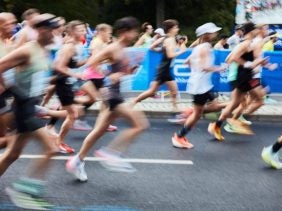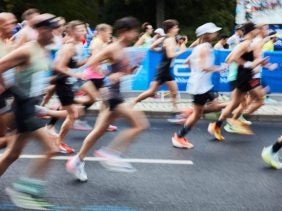An All-Encompassing Guide to Mobility and Stretching for Runners
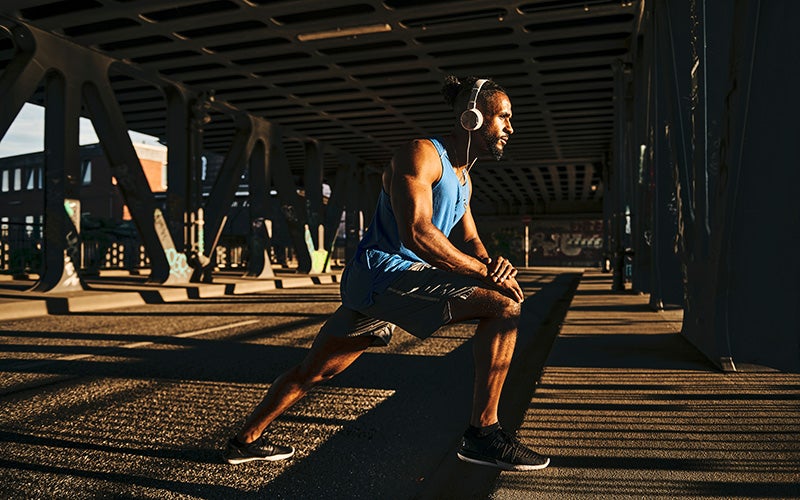 ©Drakula &Co
©Drakula &Co
Unlike well-structured strength training or group fitness classes, running is a pretty one-sided strain on your body. Sure, different tempos, surfaces, and running styles can emphasize slightly different muscle groups, but running is still running. This monotonous muscle strain strengthens the muscles that bear most of the load, so the gap in strength and flexibility between agonist and antagonist becomes wider and wider.
How can runners avoid overuse injuries and poor posture caused by muscular imbalances? With a program of stretches for runners that target these muscles and strength training for their antagonists. We’ve made it easy to add regular flexibility and mobility training to your workouts or on non-training days with our selection of exercises to add to your running training plan today! Check it out below, together with some useful definitions and reminders of the benefits of mobility training and stretching for runners.
But before we get started, here’s a quick tip: Your recovery phase is just as important as your workout! Treat yourself to our Recovery Aminos and give your body enough rest so you can go full throttle again on your next run.
What’s the Difference Between Stretches and Flexibility Training?
Stretches, along with fascia and strength training, are one part of flexibility and mobility training. This kind of training is all about increasing your flexibility and allowing you to use your joints’ full range of motion.
The goals of flexibility training at a glance:
- balanced muscle strength between agonist and antagonist muscles, so between the muscle actively performing a movement and its counterpart,
- hydrated fascia tissue,
- enough strength to get into a stretch and stay there.
Any good mobility exercise stretches specific muscle groups while strengthening others. In the process it takes full advantage of the active range of motion of the joints involved.
Stretching is divided into static and dynamic stretching, and runners will want to use both in their flexibility training. Learn more about different stretching methods, whether it is better to stretch before or after training sessions, and what to pay attention to in our article all about stretching.
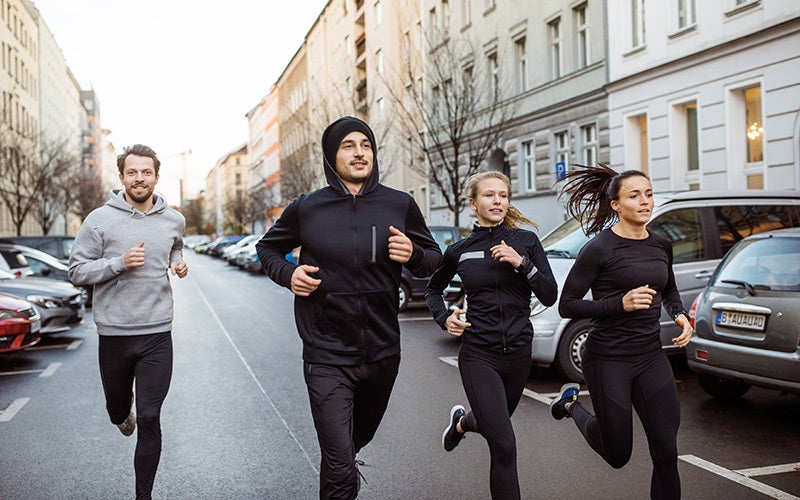
What Are the Benefits of Stretches for Runners?
Whether you just want to jog a lap now and then, or you’re training for the marathon, regular stretches for runners belong on training plans for both beginners and professionals.
Regular stretching for runners…
- may loosen tight fascia.
- reduces muscle tension.
- stimulates blood circulation to support muscle regeneration.
- helps prevent muscular imbalances and overuse injuries.
- helps maintain the full range of motion of your joints.
- improves the interaction of muscle groups.
- contributes to an efficient and healthy running style.
- supports healthy posture – in your everyday life too!
Which Muscles Should Runners Stretch?
Muscles under particular strain when running include the calves, as well as the front and back of the thighs and the hip flexors. The hamstring adductors and lower back are also under stress while jogging and are happy to be gently stretched and loosened up after running.
Our tip: Stretching after a workout session feels good, but it won’t prevent muscle soreness. After very intense runs, it’s better to wait until the soreness has let up a bit before doing any serious stretching.
Which Joints Should Runners Loosen Up?
First and foremost: your hips. Running puts the muscles around your hips under a lot of stress. Stability in your hips is important for efficient running and comes from a strong core, as well as well-trained and flexible muscles.
Pure running workouts without any flexibility exercises can lead to the muscles around the hips tensing up and result in poor posture over the long term. A good range of motion in the ankles, knees, spine, and shoulders also helps prevent lopsided tension in runners.
Which Muscles Should Runners Strengthen?
The hip-extending muscles at the back of the leg, known as the hamstrings or ischiocrural muscles, do work some in a run, but still need additional strength training. Strong glutes also support hip extension and give you that powerful push-off. The abductors stabilize your legs and support good form. And – as with almost everything – a strong core is essential for efficient and healthy running.
Our tip: Plan at least two sessions of strength training per week alongside your running workouts. Click here for our 15 strength and balance exercises that are perfect for runners.
Not flexible enough for stretching and mobility training? No way!
“I would stretch, but I’m just not flexible enough, it’s a waste of time” is a popular excuse for both runners and office workers. That only makes sense until you remember that you’re not too weak for strength training either. Everyone has to start somewhere. The most important thing about stretching is that you do it at all.
Stretching exercises can be adapted to any level. You don’t have to make it into a full split or touch your fingers to your toes to stretch! The training effect kicks in when you start feeling some discomfort: right before you reach your limit. And that’s also when your muscle starts to benefit from the stretch.
Mobility and Stretching: 6 Exercises for Runners
Warm ups and cool downs aren’t usually at the top of a runner’s list of favorite hobbies, but they’re still important. This little mix of mobility exercises and stretching is the perfect alternative to the classic cool down after a run or for on its own on your rest days.
#1 Inchworm
The ideal exercise for working your core and upper body muscles and stretching the back of your thighs.
Here’s how it works
- Place your feet hip width apart. Roll down one vertebra at a time until your hands touch the floor in front of you.
- Walk your hands forward one step at a time until you’re in a high plank.
- Then, step by step, bring your feet forward to your hands and roll back up, vertebra by vertebra.
Easy variation: Bend your legs until your hands can reach the floor.
Difficult variation: Once your hands are on the floor, pull in your belly once, stretch out your back and rest your upper body flat on your thighs. This intensifies the stretch along the entire back of your body. Then continue the exercise as described above.
Our tip: The inchworm is a full body exercise and trains both flexibility and range of motion. Push yourself to the limits of your comfort zone, but not beyond.
#2 World’s Greatest Stretch
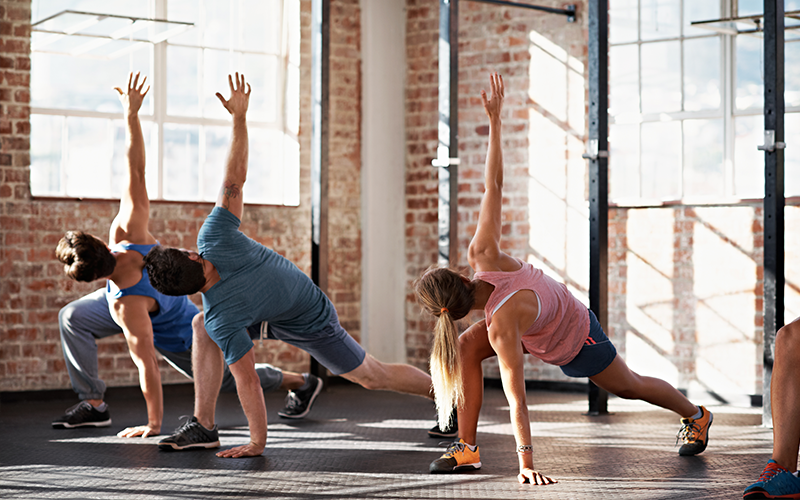
Here’s how it works
- Start in a high plank position and bring your right foot forward between your hands. Your knee should be right above your ankle.
- Place your left hand firmly on the floor under your left shoulder, fingers spread, middle finger pointing straight ahead.
- Rotate your right hand up until both shoulders and arms form a vertical line. Make sure you’re still actively pushing your left hand down into the floor.
- Rotate your arm and body back down. Bring your right forearm under your body, parallel to the floor. You may even be able to touch the floor beyond your left hand with your right hand.
- Repeat this sequence a few times and then switch sides.
Easy variation: Rest your back knee on the floor.
Difficult variation: Make your range of motion as large as possible. Using your full range of motion and staying perfectly stable? Then keep it up!
Our tips: Don’t hyperextend your shoulders, just keep them in a line. Your back leg should remain extended the entire time, except in the easier variation.
#3 Lunge with upper-body rotation
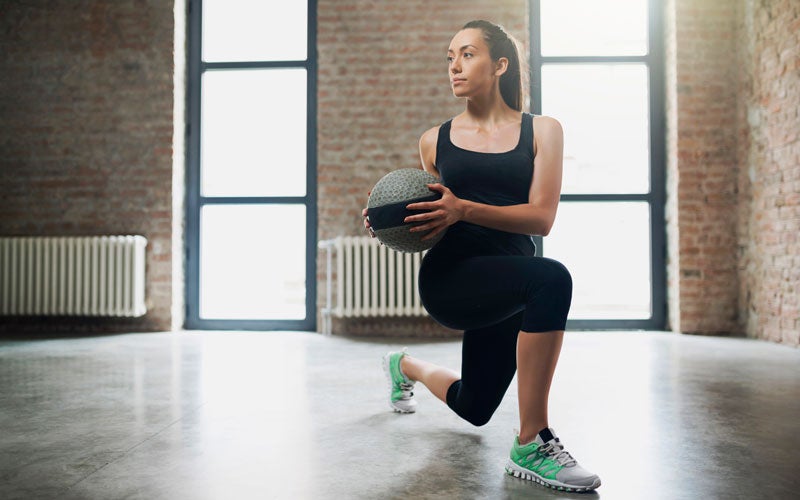
This exercise is a good general stretch for runners. It improves coordination between the upper and lower body, stabilizes your knees and ankles, strengthens your core, and loosens up your shoulders and hips.
Here’s how it works
- Begin by lowering into a lunge with your left leg in front.
- Extend both arms forward at shoulder level, with your palms touching.
- Stretch your left arm behind you at shoulder height as far as you can. Your upper body rotates with it while your legs remain stable. Look back toward your hand.
- Bring your left arm back to the front.
- Switch the leg in front and repeat the same steps for the other side.
Variations: Rotate more to make the stretch more difficult, rotate less to make it easier.
Our tip: Keep your lower body in a stable and clean static lunge position the entire time.
#4 Hip Flexor Stretch
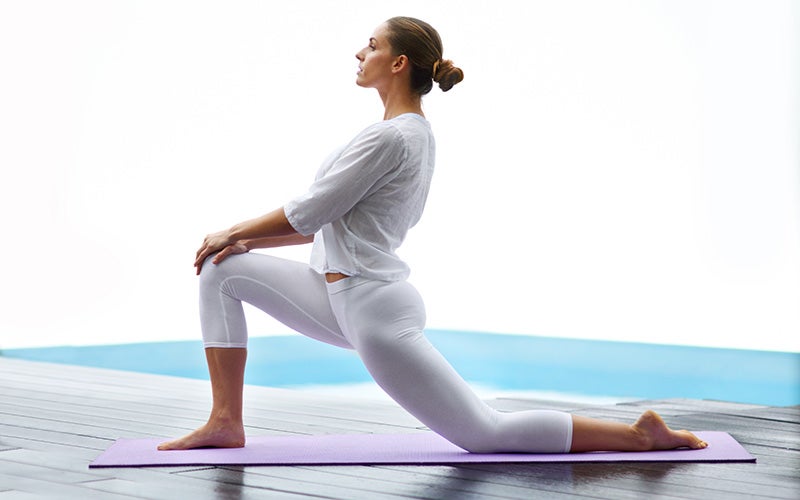
This exercise stretches the hip flexor and the entire front of your body. It’s not only perfect for after jogging but also after a long day at the office.
Here’s how it works
- Start on all fours. Bring one foot forward between your hands, with your ankle just above the knee.
- Stretch your back leg back as far as you can.
- Straighten your torso with your shoulders just about above your hips.
- With each exhalation, slowly lower your hips toward the mat.
Easy variation: Place an extra pad under your back knee and keep it right under your hip.
Difficult variation: Lift your arm on the side of the back leg with your palm pointing forward. Bring this arm back slightly and open your chest by leaning backward slightly.
Our tip: Pay attention to any pressure in your lower back during this exercise. Pull your belly button slightly toward your spine and straighten up from your lumbar region. Allow your shoulders to relax down.
#6 Pigeon
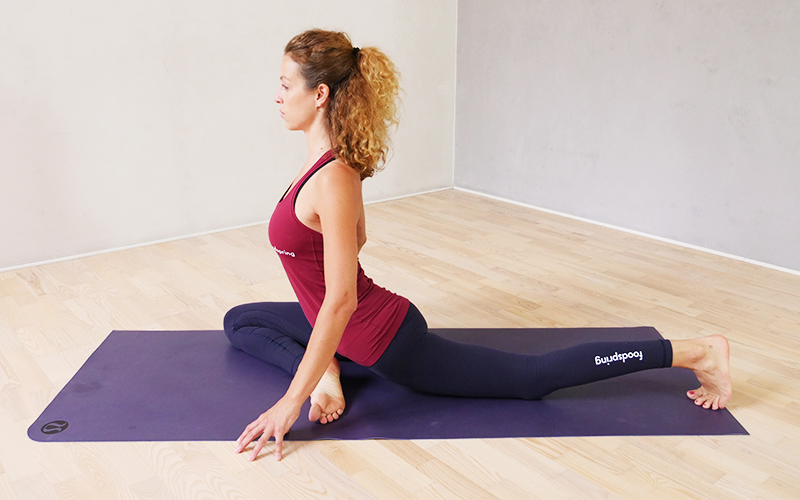
This position is one of those stretches that should be part of every runner’s routine. The pigeon stretches your glutes, ITB, and hip flexor, while opening up all of your chest muscles.
Here’s how it works
- Start in a high plank with your shoulders, elbows, and wrists in one line.
- Pull one knee close to your chest and slowly lower your whole body to the floor.
- Legs stay parallel to the long edge of the mat, with your front knee in line with your hips, your hip joints pointing straight ahead. Your back leg is parallel to the edge of the mat.
- Push up with your hands and sit upright.
Easy variation. Sit with a folded blanket under one of your hips to avoid tipping to the side. Distribute your weight evenly on both hands.
Difficult variation: Increase the angle in your front knee up to 90°. The greater the angle, the more intense the stretch. Try to relax your hip down more.
Our tips: Always keep your hip joint pointing straight forward to really stretch the hip muscles and not just drop to the side. Don’t try to push yourself too far: sit up as high as you need to in order to keep the hip pointing straight forward. You’ll be able to go lower eventually.
Further reading: This exercise is also a common yoga posture. Learn all about its benefits and how you can best adapt it for your body in our article about getting started with yoga.
#7 Half Squat
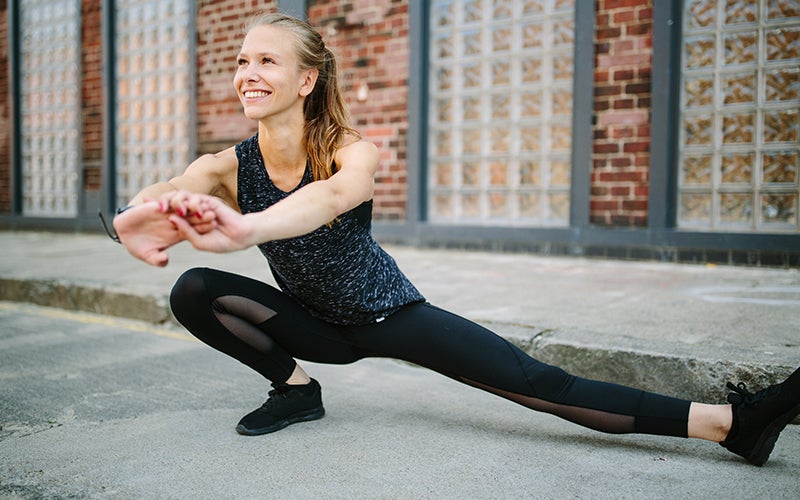
This exercise improves hip joint mobility, stretches the adductors, and loosens up the ankles and hamstrings.
Here’s how it works
- Place your feet in a wide stance with your toes pointing forward.
- Turn one foot out at 45° and bend that leg into a deep lateral lunge.
- Keep your other leg extended and push the outside edge of that foot into the ground.
- After about 30 seconds, change the extended leg’s foot rotation: put the back of the heel down and let the toes point upwards.
Easy variation: Keep your hips higher and bend your leg less.
Difficult variation: Release your hands from the floor.
Our tips: Keep the heel of your bent leg flat to the ground and your upper body as upright as possible.
Want more variety? Then try integrating some other yoga poses for beginners into your workout plan! Start by going to a regular class to learn to do the exercises right. Bonus: yoga is not only about physical stretching exercises, but also mind-body harmony.
Conclusion
- Stretching for runners helps you maintain a more efficient running style and better posture.
- A good mobility and stretching session helps compensate for running-specific stresses on your muscles and reduces the risk of overuse injuries and negative effects on your posture.
- Range of motion exercises and effective stretching are an integral part of any sport and are always a good idea. You’re never too stiff to get started! The limits of your comfort zone are where you start to make progress. And those limits will be different for everyone!
More tips for runners from foodspring:
- 11 Reasons to Go Running in the Rain
- Energy Aminos – For That Pre-Workout Boost
- 10 Flexibility Exercises to Get You Feeling Looser
- Barefoot Running: Your Feet Are the Best Shoes
- Feel Your Best with These Easy Mobility Exercises
Sources for this article
We at foodspring use only high-quality sources, including peer-reviewed studies, to support the facts within our articles. Read our editorial policy to learn more about how we fact-check and keep our content accurate, reliable, and trustworthy.































